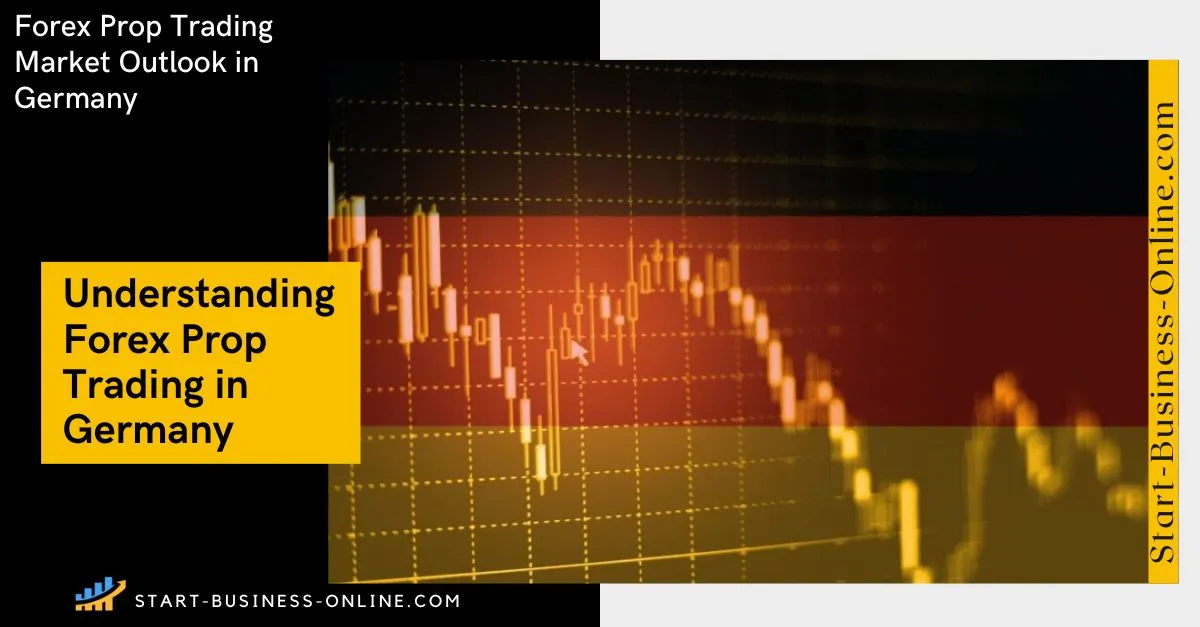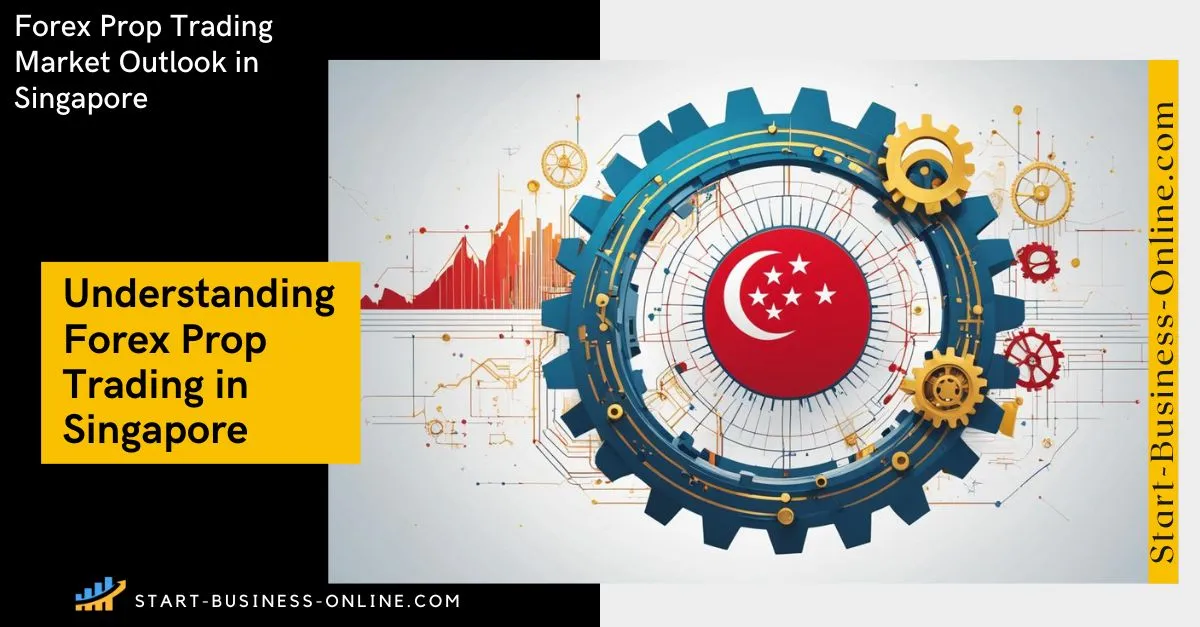AI search is rapidly becoming the default discovery layer for prop trading, meaning more traders now start their research inside conversational answer boxes instead of scrolling traditional Google results. That compresses your due diligence into a few AI-generated summaries that blend official firm pages, niche blogs, and community threads.
To stay ahead, traders need a repeatable AI-aware research process—using generative engines for structure and checklists, then verifying every drawdown rule, payout term, and challenge target on official pages and in real trader reports. Content creators and prop firms that embrace Generative Engine Optimization (GEO)—clear questions, direct answers, entity-rich explanations, and worked examples—are far more likely to power those AI answers and attract serious, high-intent traders.
Page Contents
- 1. TL;DR — At a Glance
- 2. AI Search vs Traditional Search: Why Traders Should Care
- 3. How AI Actually Chooses What You See
- 4. Generative Engine Optimization (GEO) for Prop Trading Content
- 5. Core GEO Principles for Prop Trading Articles
- 6. GEO Checklist for Prop Firms and Prop Review Sites
- 7. Numeric Example: AI-Compressed Due Diligence
- 8. Worked Sizing Example
- 9. Research Process for Traders in an AI-First World
- 10. Step 1 – Use AI for the map, Not the destination
- 11. Step 2 – Build a Personal Checklist
- 12. Step 3 – Ask AI for Firms, Then Demand Sources
- 13. Step 4 – Verify the Numbers Yourself
- 14. Step 5 – Use Communities Intelligently
- 15. Common Mistakes Traders Make With AI Search
- 16. Mistake 1 – Taking AI Answers as Truth
- 17. Mistake 2 – Ignoring Small, Niche Sites
- 18. Mistake 3 – Skipping a Personal Risk Framework
- 19. Key Metrics and Tools to Track
- 20. Trading Metrics
- 21. Research Metrics
- 22. GEO Metrics for Content Creators
- 23. Conclusion: Use AI and GEO, But Keep Your Edge
- 24. Frequently Asked Questions (FAQs)
View more
TL;DR — At a Glance
- AI search is already a major discovery channel for prop firms. Directionally, around one in three “which prop firm should I use?” journeys now begins inside an AI-style interface rather than classic Google results.
- Being “the answer” matters more than being rank #1. Studies of AI search show that tools like ChatGPT frequently cite pages that don’t rank on the first Google page, yet still monopolize user attention inside the AI box.
- Generative Engine Optimization (GEO) is the new skill set. You’re no longer just optimizing for keywords—you’re optimizing to be cited, quoted, and summarized correctly by AI engines.
- Prop content that wins in AI search looks different. It’s dense with entities (drawdown types, phases, payout rules), filled with worked examples, and structured as clear Q&A chunks that AI can easily extract.
- Traders who understand this have an edge. If you research firms and strategies with a clear AI-aware process, you’re less likely to fall for weak marketing, hidden rules, or cherry-picked Trustpilot screenshots.
AI Search vs Traditional Search: Why Traders Should Care
Semrush’s research into AI search shows three big shifts that matter for traders: AI search usage is on track to rival—and eventually overtake—traditional search traffic within a few years; Google’s AI features like AI Overviews and AI Mode are increasingly triggered for informational queries; and AI visitors tend to convert several times better than classic organic visitors because they arrive pre-educated.
In practical terms, that means more of your prop research will be filtered through AI answers before you even click a website. When you ask:
“Best 2-step prop firm for EU swing trading with 10% drawdown”
you’ll often see a conversational summary with three to five firms, key rules, and some pros and cons. Only then do you choose which link—if any—to open.

As a trader, that compressed journey is convenient, but it also concentrates risk: a single flawed AI answer can steer you toward a firm with weak risk controls, unclear terms, or unstable payouts.
How AI Actually Chooses What You See
Large language models don’t simply “read Google and repeat page one.” AI engines like ChatGPT, Gemini, and Perplexity stitch answers together from many sources, including:
- Long-tail blogs that live beyond page one in traditional search
- Community threads on Reddit, Discord, and specialist forums
- Business and service sites (including prop firms’ own rule pages)
- Q&A style content such as FAQs and practical checklists
Semrush’s AI search work highlights three realities that traders should internalize:
- Your Google rank doesn’t guarantee an AI mention. AI engines often cite pages from positions 20+ for detailed, niche explanations, not just the top three results.
- Informational queries dominate AI answers. Definitions, comparisons, and “how does this work?” style questions are most likely to trigger AI summaries—exactly the kind of queries traders use when decoding drawdown logic or scaling plans.
- Zero-click behavior is nuanced. Even when an AI box appears, users still click when they want depth, examples, or up-to-date rulebooks. Well-structured content can still win those clicks.
For prop trading, that means a detailed article on balance-based vs equity-based drawdown in prop firms can quietly power a lot of AI answers—even if it never wins the top organic position by itself.
Generative Engine Optimization (GEO) for Prop Trading Content
Generative Engine Optimization (GEO) is the discipline of making your content easy for AI engines to understand, trust, and quote. In practice, GEO means optimizing for AI-powered engines like ChatGPT, Perplexity, Gemini, and Google’s AI features, with a focus on machine-readable structure, clear intent matching, and extractable answers.
Applied to the prop industry, GEO means designing your articles so that an AI tool can confidently answer questions like which firms are best for beginner-friendly challenges, where to find the cheapest evaluations, or how specific drawdown rules affect your odds of passing.
If you want to dig deeper into how AI search behavior is changing, the Semrush AI search & SEO traffic study shows how often AI answer boxes appear, how they influence clicks, and why high-intent visitors from AI search can be several times more valuable than classic organic traffic.

Core GEO Principles for Prop Trading Articles
- Answer the question in 1–2 sentences first. If your H2 is “What is a two-step prop firm challenge?”, the first paragraph should give the definition before you tell stories or add commentary.
- Use headings that read like real questions. AI engines love natural-language queries: “How does max daily loss work?” beats “Drawdown Mechanics” as a heading.
- Structure content into extractable blocks. Lists, tables, and short Q&A answers make it easier for AI to quote your content cleanly when summarizing rules or comparing firms.
- Pack your content with entities, not fluff. Mention concrete elements: evaluation phases, profit targets, reset fees, allowed instruments, weekend holding, payout percentages, regulators, and platform names.
- Back opinions with numbers and examples. AI engines favor content that mixes explanation with simple math or scenarios instead of vague claims.
If you publish prop-focused content that follows these patterns, you’re not just ranking for keywords—you’re training AI engines to see your site as a go-to explainer whenever someone types a complex prop question.
GEO Checklist for Prop Firms and Prop Review Sites
- For prop firms: Create a “rules explained” article that translates your terms & conditions into plain language with examples for each rule.
- For review sites: Build comparison tables for every account size and challenge type, including max DD, daily DD, targets, payout, and typical pricing ranges.
- For education brands: Publish playbook-style guides (“30-Day Plan to Pass a 2-Step Challenge”) with clear steps and scenario math.
- For communities: Curate FAQ threads where experienced traders answer high-intent questions in 2–4 sentences each.
All of these formats line up almost perfectly with what generative engines prefer to surface.
Numeric Example: AI-Compressed Due Diligence
Suppose you want a $100k two-step challenge with:
- 10% max overall drawdown
- 5% max daily drawdown
- 8% Phase 1 profit target, 5% Phase 2
- 80/20 or better profit split
You ask an AI engine for recommendations. Under the hood, it might:
- Scan multiple firm rule pages to confirm drawdown math
- Pull recent community threads about payouts and support quality
- Reference long-form comparison articles that already organize the data
You see a neat answer listing three firms, a quick table of rules, and a short “best for” description for each. It feels like an hour of research compressed into 20 seconds.
But that compression relies heavily on the quality of underlying content. If most of the pages AI sees are out of date, biased, or incomplete, the answer will be skewed—even if the interface looks polished.
Worked Sizing Example
Daily loss cap = $5,000 on a $100k evaluation (5% daily). For XAUUSD, assume roughly $10 per tick. With a 30-tick stop, you risk about $300 per lot.
Target ≤ 70% of daily cap → 0.70 × 5,000 = $3,500 risk/day
Max lots if 1 trade = 3,500 / 300 ≈ 11.6 → cap at 11 lots
If 2 trades/day = 1,750 per trade → 1,750 / 300 ≈ 5.8 → 5 lots per trade
This kind of clear, numerical example is exactly what AI engines like to surface when explaining “how to size positions for a prop firm daily loss limit.”
Research Process for Traders in an AI-First World
To stay safe and informed, you don’t need to abandon AI search—you just need a structured process.
Step 1 – Use AI for the map, Not the destination
Start with AI to outline the landscape:
- “What are typical rules for 1-step vs 2-step challenges?”
- “What’s the difference between trailing and static drawdown?”
- “List common prop firm rules that catch traders off guard.”
Capture the main points in your notes: challenge types, usual drawdown ranges, common restrictions, and payout structures.
Step 2 – Build a Personal Checklist
Turn those insights into a reusable due-diligence checklist that you apply to every firm:
- Challenge type (1-step / 2-step / instant)
- Profit targets per phase
- Max overall and daily drawdown + how they’re calculated
- Permitted instruments and trading styles (indices, FX, gold, futures, EAs, copy trading)
- News and weekend rules
- Payout schedule, minimum payout, and scaling rules
- Evidence of stable payouts and clear support channels
Step 3 – Ask AI for Firms, Then Demand Sources
Once you have a checklist, ask AI for firm suggestions—but always follow up with:
- “Show the sources you used.”
- “Link me to the official rule pages.”
- “Show recent community discussions about payouts or rule changes.”
Click through to verify everything that touches risk or withdrawals. If AI’s summary disagrees with the terms & conditions, the T&Cs win.
Step 4 – Verify the Numbers Yourself
For each firm on your shortlist, run basic calculations:
- Dollar amount of max overall and daily drawdown
- Number of losing trades you can take at your planned risk per trade
- How many average winning trades (in R) you need to hit the target
This forces you to see the challenge not as marketing copy but as a risk budget.
Step 5 – Use Communities Intelligently

AI increasingly surfaces Reddit threads, Discord feedback, and YouTube comments. When you follow those links:
- Prioritize posts with dates, screenshots, and concrete numbers.
- Look for repeating patterns in payout experiences and support quality.
- Down-weight vague praise or anger with no specific evidence.
Over time, you’ll develop an instinct for which firms are genuinely trader-centric and which are built around aggressive marketing with fragile rules.
Common Mistakes Traders Make With AI Search
Mistake 1 – Taking AI Answers as Truth
AI can misunderstand or hallucinate details about prop rules—especially when firms change drawdown logic or payout terms frequently. Never act on a single, unverified AI summary.
Marketing headlines about “instant withdrawals” or “daily payouts” can also distort how AI answers describe a firm. Before you rely on those claims, read our breakdown of the truth behind daily payouts in prop trading so you understand how payout schedules really work in practice and what conditions usually apply.
Mistake 2 – Ignoring Small, Niche Sites
Because generative engines favor deep, specific explanations, niche blogs and specialist comparison sites often have more influence over AI answers than their organic rankings suggest. If AI cites a small site repeatedly, it’s worth reading closely.
Mistake 3 – Skipping a Personal Risk Framework
Copy-pasting “0.5% per trade” from a generic AI answer into a 5% daily loss challenge might still push you into psychological overload. Risk settings have to fit your temperament, experience, and time available.
Key Metrics and Tools to Track
Trading Metrics
- Max overall and daily drawdown in both % and currency
- Distribution of R-multiples across your trades
- Win rate vs average R per winner
- Equity curve behavior around news and high-volatility sessions
Research Metrics
- Number of independent sources checked per firm
- Frequency of rule or payout complaints in communities
- How often AI answers about a firm match the official rule page
GEO Metrics for Content Creators
- How many AI tools (ChatGPT, Perplexity, Gemini, etc.) surface or cite your content when asked prop-related questions
- Share of traffic coming from branded vs non-branded questions about prop firms and funded accounts
- Engagement depth: time on page, scroll depth, and repeat visits from traders researching multiple firms
Conclusion: Use AI and GEO, But Keep Your Edge
AI search and generative engines are not going away. They’re rapidly becoming the front door to the prop industry, shaping which firms traders see, which rules they focus on, and which strategies feel “normal.”
If you’re a trader, your edge comes from using AI as a fast, structured research tool—then validating every critical detail before committing risk capital. If you’re a content creator or a prop firm, your edge comes from publishing GEO-friendly content that explains complex rules clearly, uses real numbers, and earns a place inside AI answers.
In both cases, the goal is the same: don’t let opaque algorithms make all the decisions. Use AI to speed up your work, but keep human judgment in charge.
Frequently Asked Questions (FAQs)
No. You still need classic SEO to stay visible in Google, but GEO adds a new layer: making your content easy for AI engines to understand, trust, and quote when traders ask prop-related questions.
Yes. Because AI engines favor deep, specific explanations, a well-written niche article on a narrow topic can be cited more often than generic content from bigger brands.
Clarify rules in plain language, add Q&A sections, include worked numerical examples, and keep payout, scaling, and rule changes updated so AI systems don’t repeat outdated information.
Always double-check max overall and daily drawdown, profit targets, news and weekend rules, and payout conditions on the firm’s official rule page before paying for any challenge.
Yes. Use AI to simulate trade sequences, calculate risk, and outline 30-day challenge plans, then test those ideas in demo or small-size environments before committing full challenge fees.





